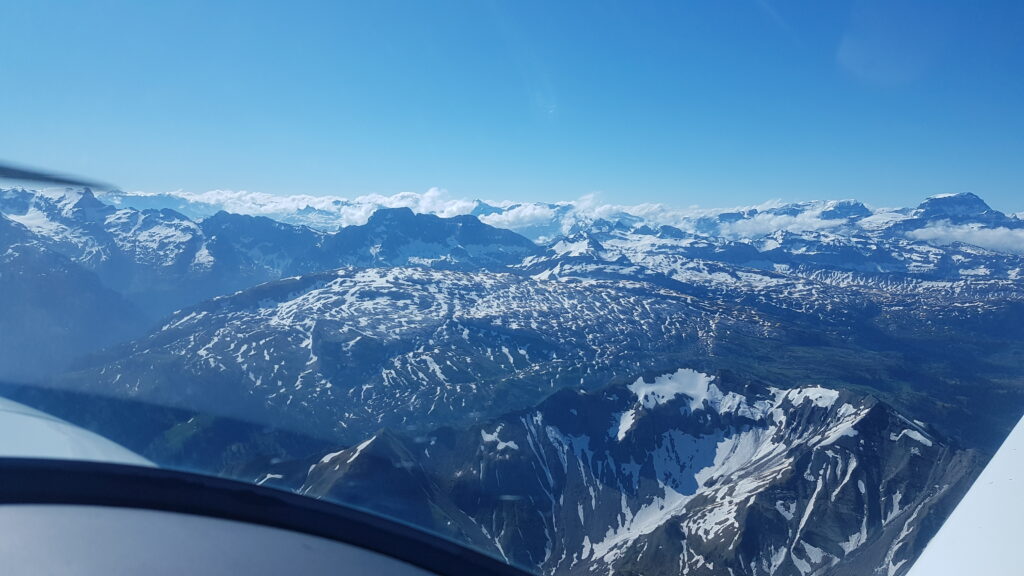03.05.2020: Today Copenhagen airport hat the first commercial flight scheduled only for mid afternoon, so they allowed some glider guys to use the airport for some short flights, making these the first time ever a glider flew from / to Copenhagen airport. My friend who works at the airport had the change to go out on the airfield and to observe the flights close up, taking some pictures of the event.

The glider they have used is a Danish design, called Polyt III, with serial number 1. It has been designed by the Polyteknisk Flyvegruppe or Polytechnic Flying Group, which is closely connected to the Technical University of Denmark. The Polyt III was used by the Danish Air Force from 1954 to 1966 under the registration Z-931, but then transferred to a glider club and registered as OY-XFA. It has been restored recently by the Danish Vintage Glider Association and had it’s first flight after restoration only two weeks ago. It looks quite similar in design as the Schleicher Ka 4 Rhönlerche, on which I learned to fly in 1977.

As it looks below also the fire brigade found an excuse to go and have a look at the plane.
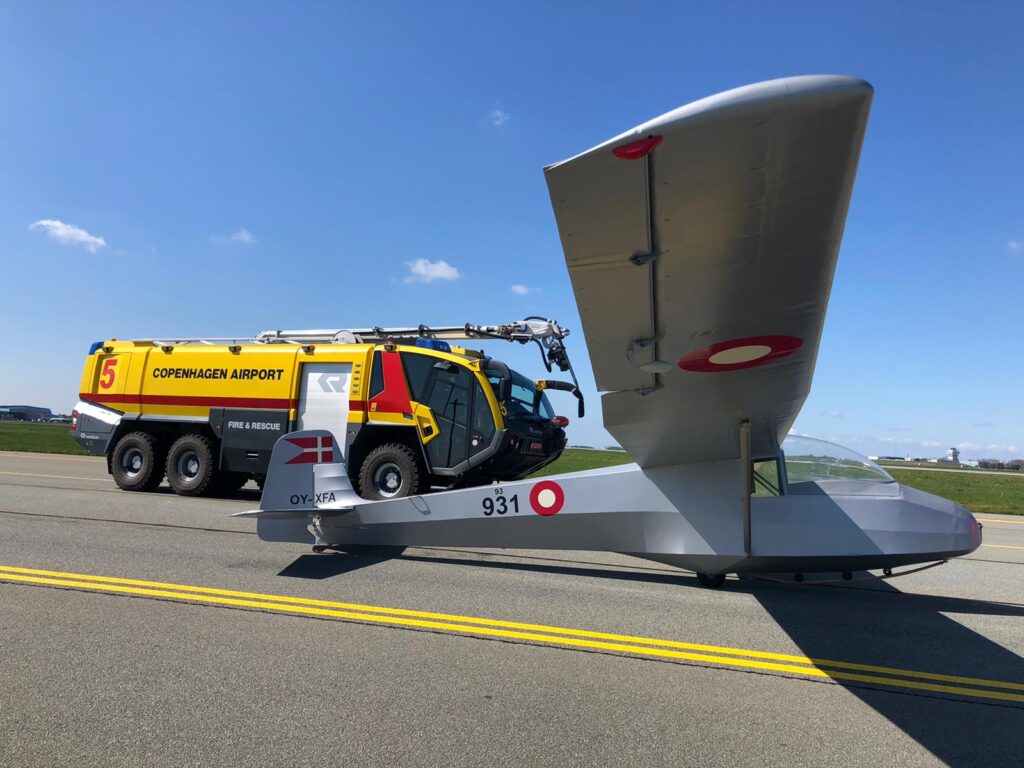
As they had some time left my friend got the chance to take a short flight as passenger in the glider, actually his first flight ever in one. He absolutely loved it, as everybody does as flying in gliders is just so different from motor planes. No noise, no headsets, just pure sensation of flying. He managed to make a short video, below a picture taken from it. If someone wants to see the full video, here it is.
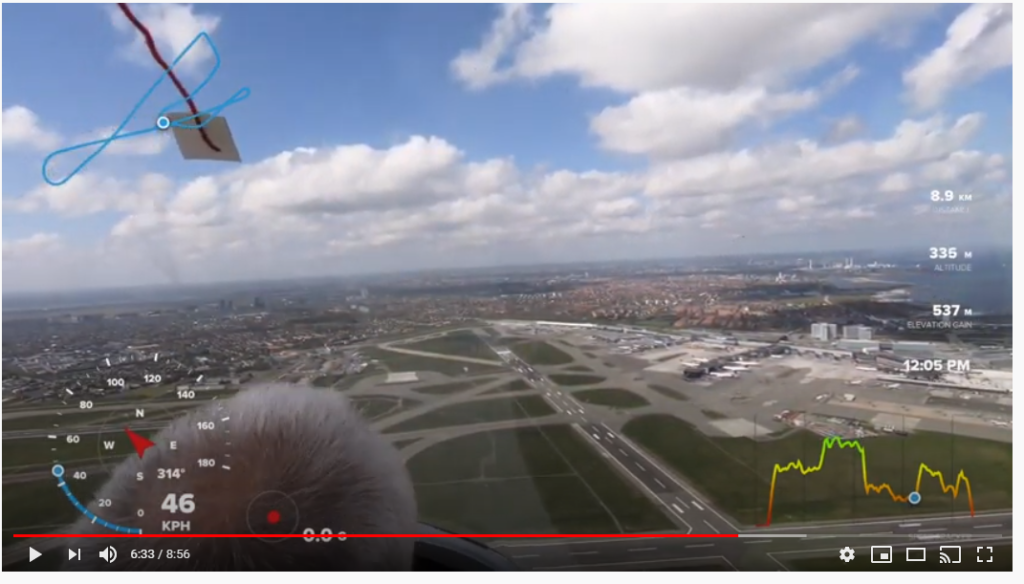
The Danish Vintage Glider Association has published an article on the event, including many nice pictures. I can be found on their website under the following link:
13.05.2020: I noticed that some pictures on my website are not being show with the proper orientation on Google Chrome, they are turned 90 or even 180 degrees. On Microsoft Edge and Mozilla Firefox however they are all shown correctly. I found a way to correct this, which cost me half a day to do, but now they all seems fine.
17.05.2020: I went flying again today. It has been quite nice weather, blue sky in the plains but not too warm (around 17 oC) and bumpy with some clouds in the mountains.
Just before we were ready for departure Dani took off in his Bücker Jungmann. It is a Spanish built variant from 1957, which he restored with the original engine. When I’m at home I can always recognise him flying overhead from the sound of the engine, it sounds like a large radial engine, even though it’s a four cylinder in line engine with only 125 hp.
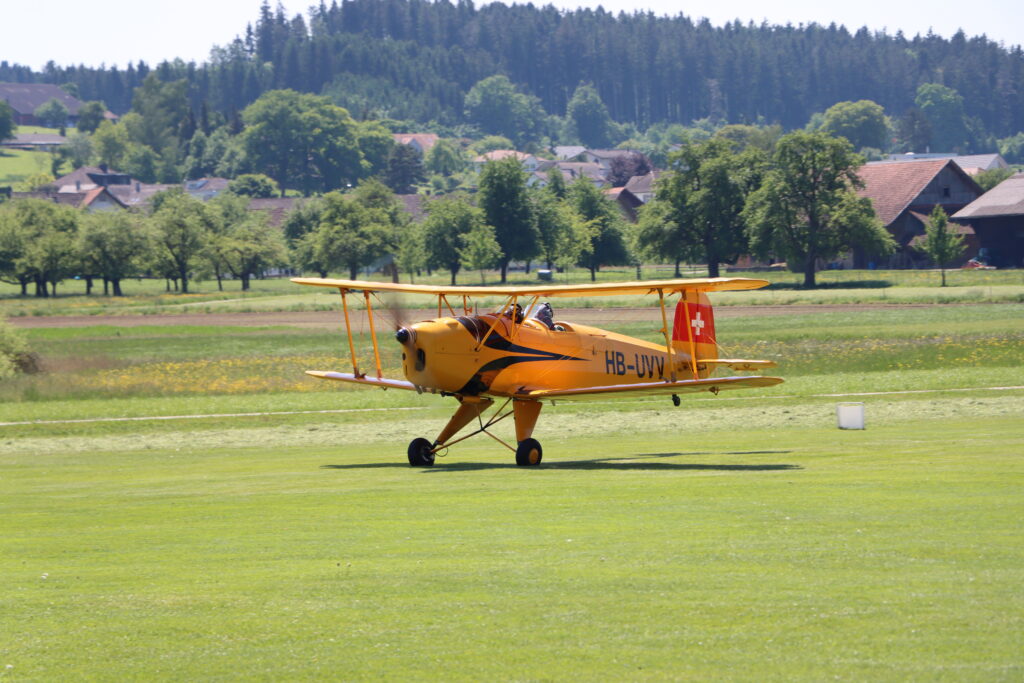
A few minutes later we were on our way towards the mountains, which were however partially obscured by clouds. This was in line with the weather forecast, which predicted 7/8 of clouds with a base between 6’000 and 7’000 ft.

We therefore did a tour in the foothills, passing the Walensee and then heading into the Rhine valley.
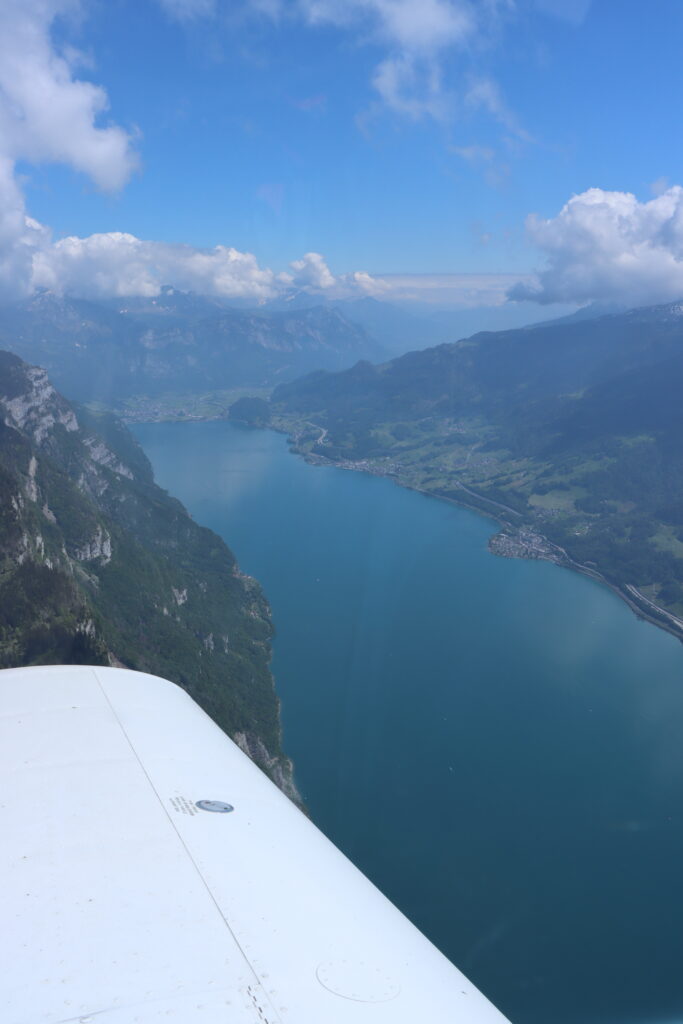
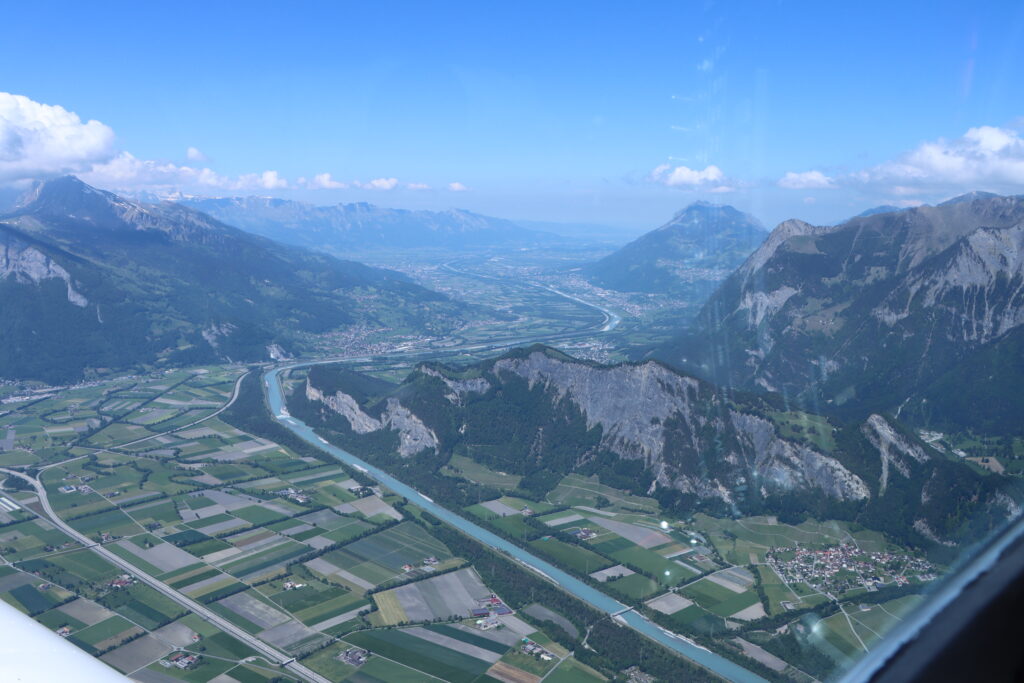
From there we were heading north towards Lake of Constance, following the Rhine river. Following signature of a treaty with Austria in 1892 the Rhine has been forced into a straight bed, which with some exceptions also forms the border between the two countries. The correction has been made to eliminate the frequent flooding of the surrounding land and villages, as the “new Rhine” has more gradient due to it’s shorter length (it has been shortened by 10 km over the last 30 km). The Rhine has an average water flow of around 250 m3/s, but it varies from 40 m3/s to 3100 m3/s, which is typical for mountain rivers.
A lot of effort is being made recently to improve the ecology of the river, partially by adding the gravel banks which can be seen below in the riverbed. Due to the extreme water levels it can carry, flood protection however still is the main priority.

Below one of the shortcuts which shortened the length of the river, which put the Swiss village of Diepoldsau on the Austrian side of the river. The border still follow he old riverbed, which has been preserved as kind of ecological reserve.
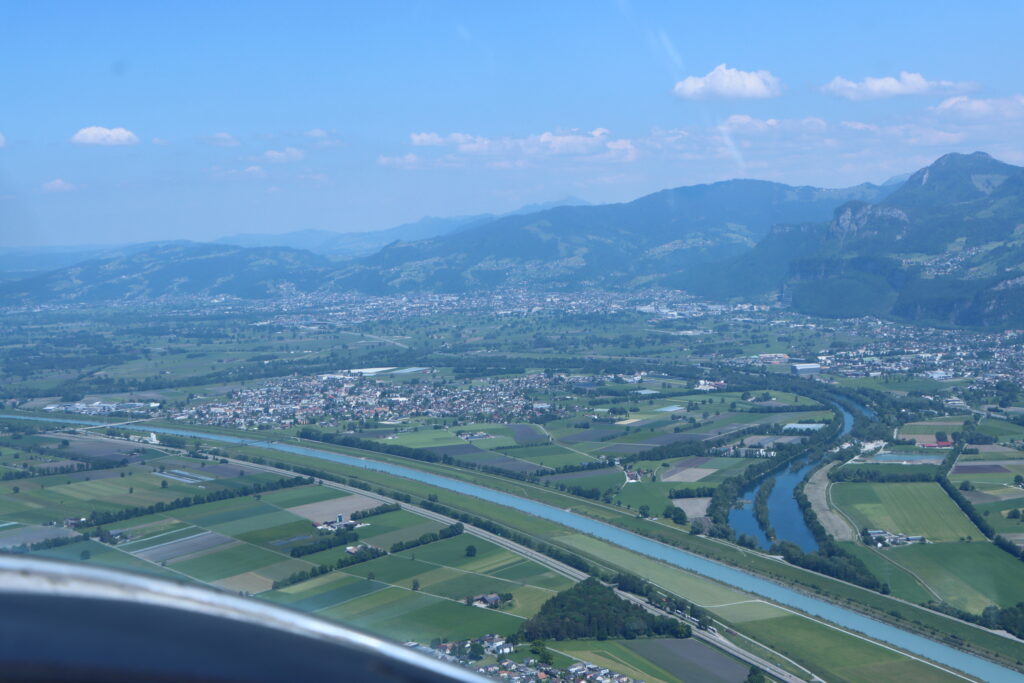
Due to Corona S. Gallen airport (LSZR), which is a controlled airport, has reduced opening hours. They have a daily scheduled flight from/to Vienna, largely for people from Vorarlberg, the province of Austria which borders Switzerland and Lake of Constance. As this flight is suspended they close the airport frequently, as to day, meaning the control zone is not active. We took advantage of this, taking a closer look at some places one normally doesn’t have the chance to see from above. You can of course always request a crossing of the CTR, but that’s normally on a straight line and often with an assigned routing.
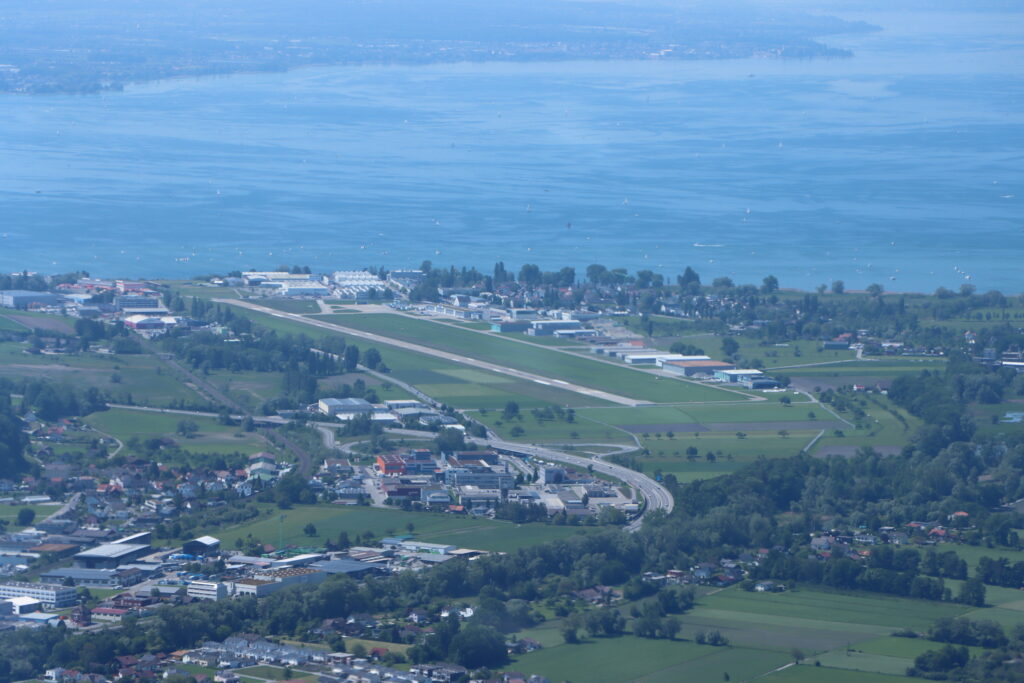
Below the new mouth of the Rhine river, which has been extended into the lake as it deposits quite an amount of sand and mud. It now lies within Austria, so some parts of Austria are now on the Swiss side of the river.
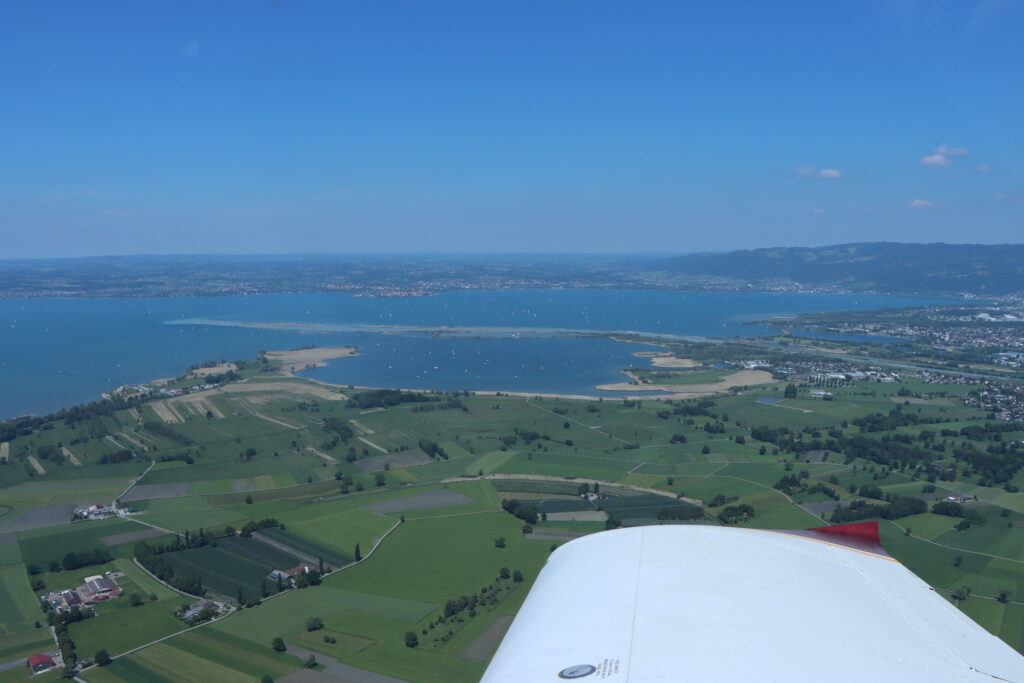
In contrast below the river mouth of the old river, also here the old riverbed has been preserved over many km. It still forms the border between the two countries. Again it is a kind of ecological reserve, but it is also used by pleasure boats over quite some distance. There is even a daily course ship from Rorschach upstream to Rheineck.
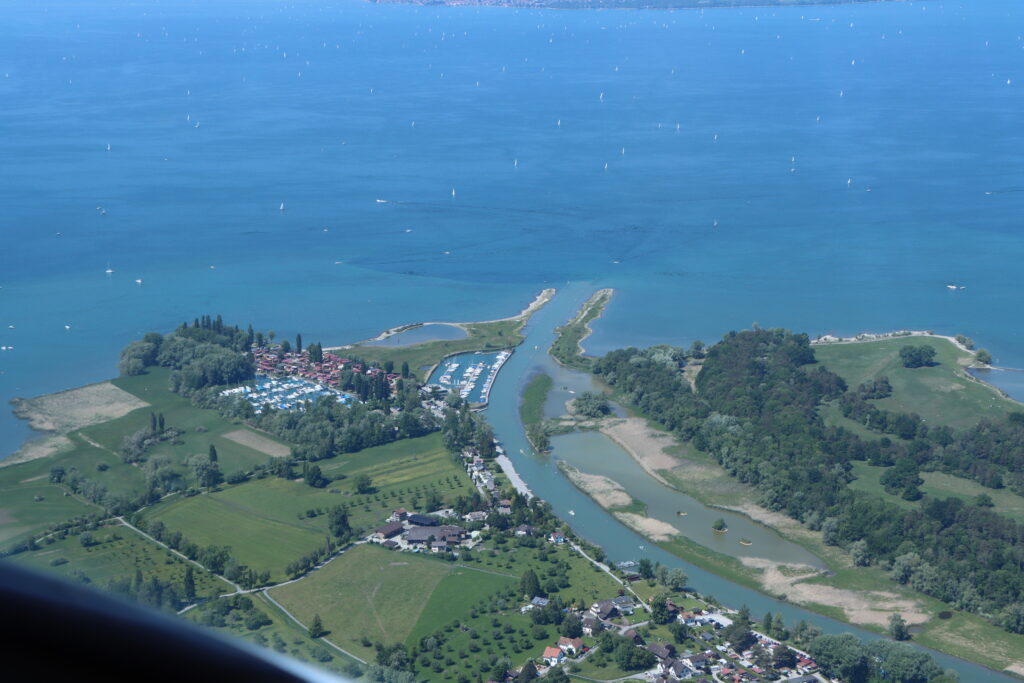
Here a view of Rorschach, the next bigger town near St. Gallen airport. The city of St. Gallen is actually 15 km away from the airport.
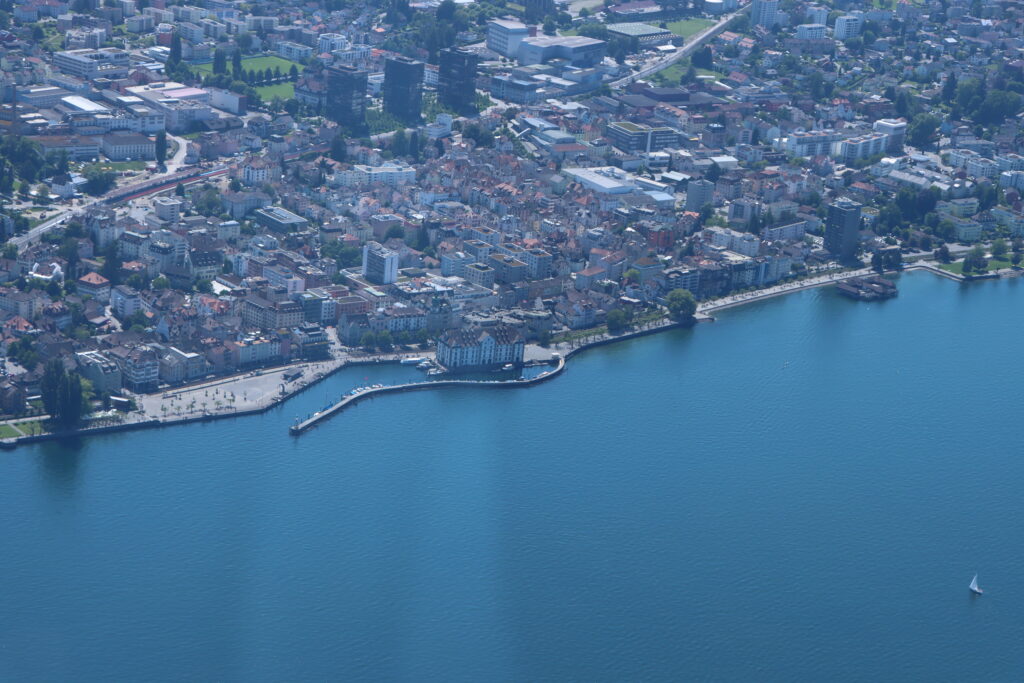
We continued along the lake, on which an amazing number of boats was out, enjoying the weather and the relaxation of the Corona related rules. Below a row of motor boats lined up just where the shelf drops off, that’s probably the furthest out where they can anchor.
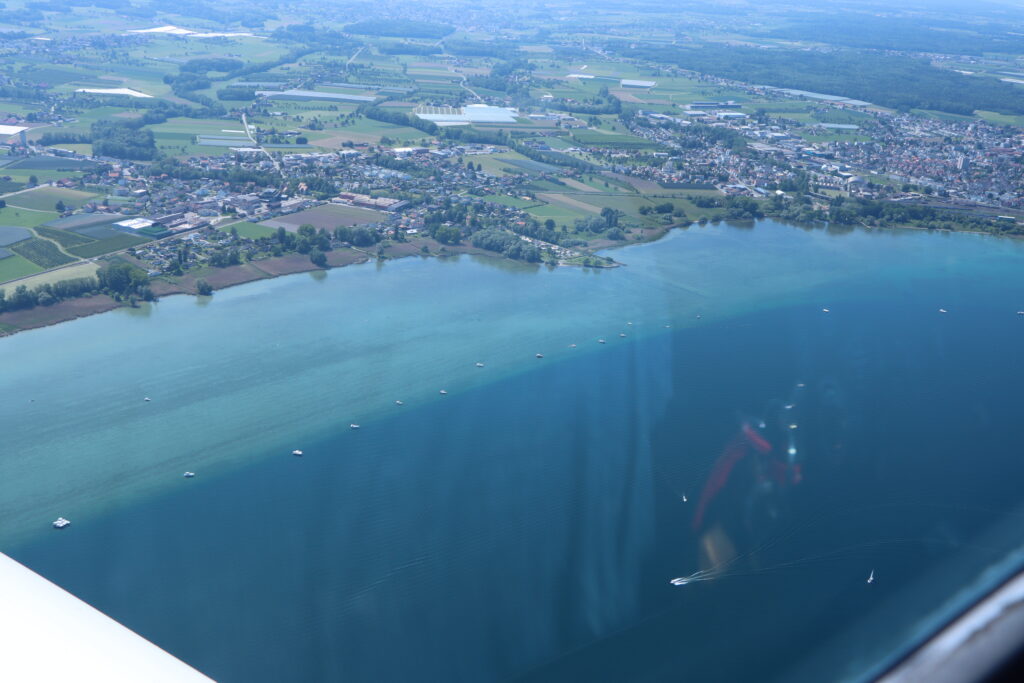
The relaxation of the Corona rules has not yet reached the ferry connecting Romanshorn with Friedrichhafen in Germany, the ferries are moored in the harbour of Romanshorn.
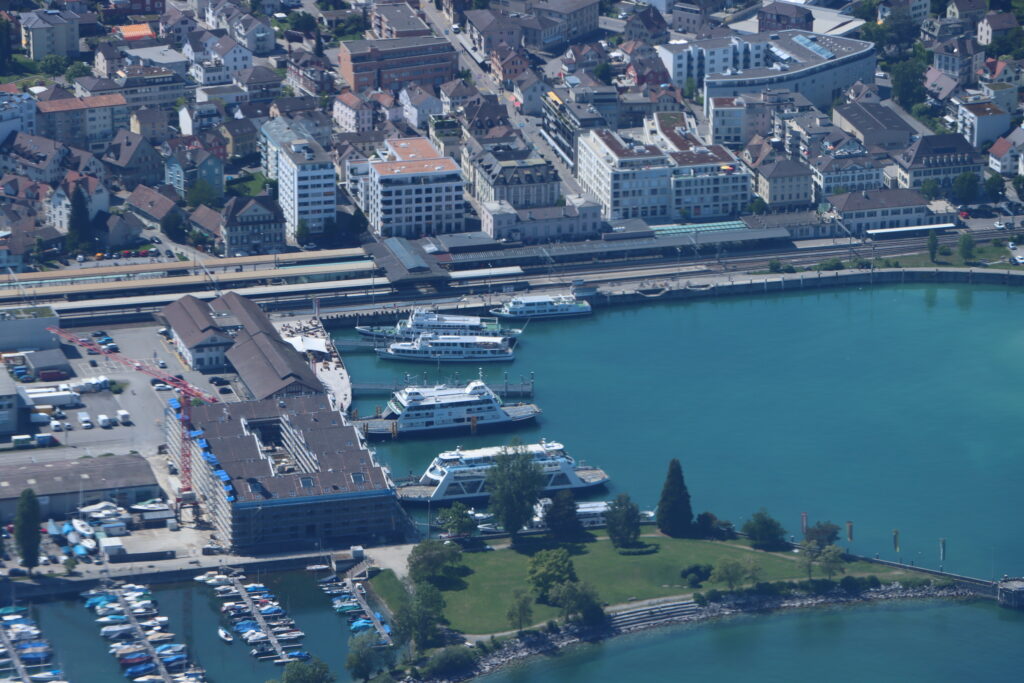
We then continued along the lake past Kreuzlingen / Konstanz, reaching the smaller Untersee (lower lake). The island in the lake is called Reichenau and is part of Germany. Passing that location we then turned back towards Lommis.
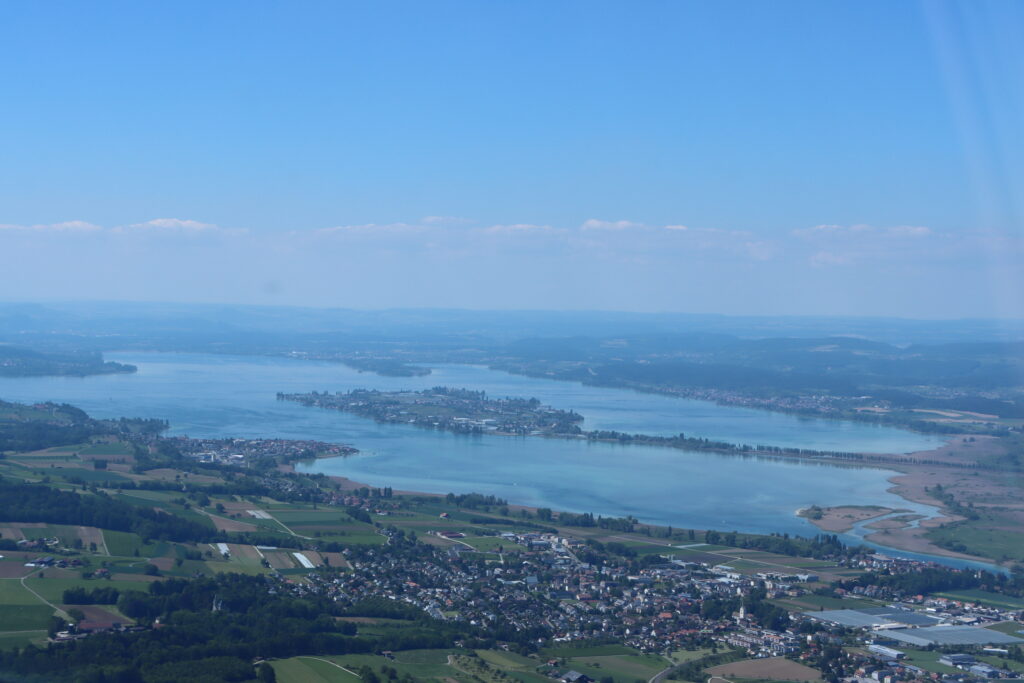
We were hardly on the ground when Dan also came in for landing, I actually stopped on the taxiway (with the engine running) to take some pictures.

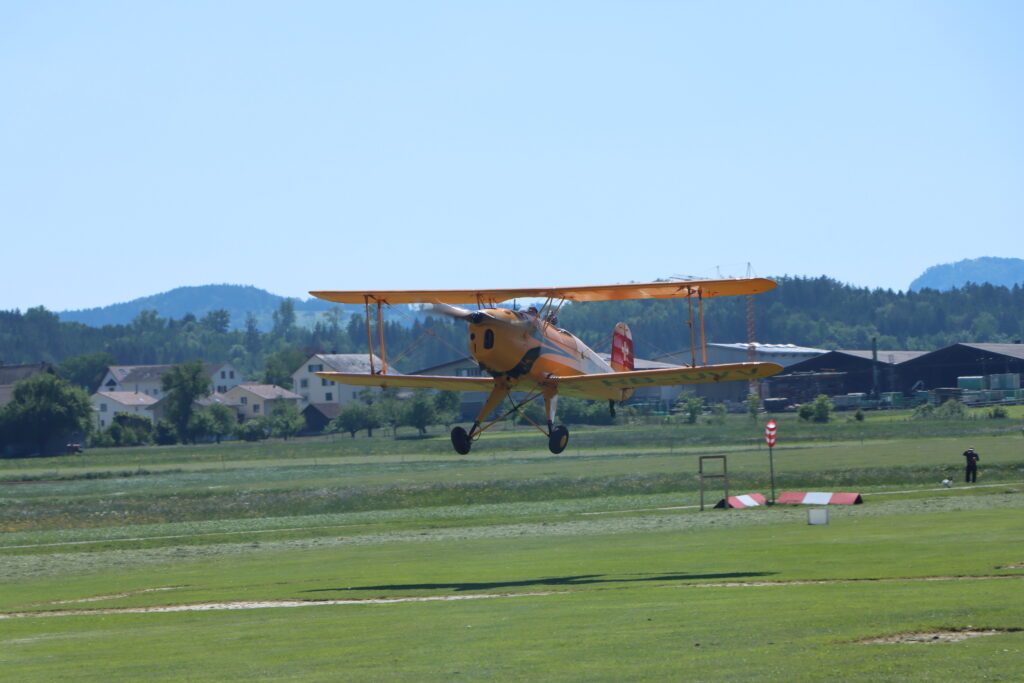
After putting the plane back in the hangar we were just about ready to leave when a glider came in to land, which happens a few times a year when a pilot from the nearby glider airfield in Amlikon (LSPA) can’t make it home home. Instead of landing in a field, which means sending someone with a trailer and dismantling the glider, they rather land in Lommis, where they can call for the tow plane to get them back home. Amlikon is only three miles from Lommis, that’s definitely a short hop.
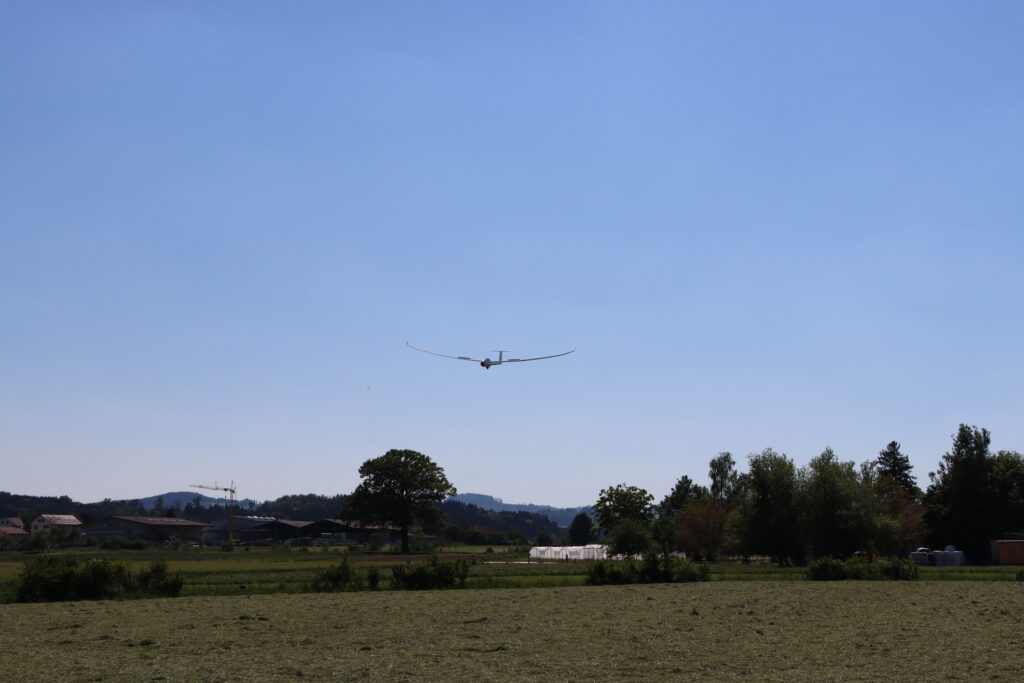
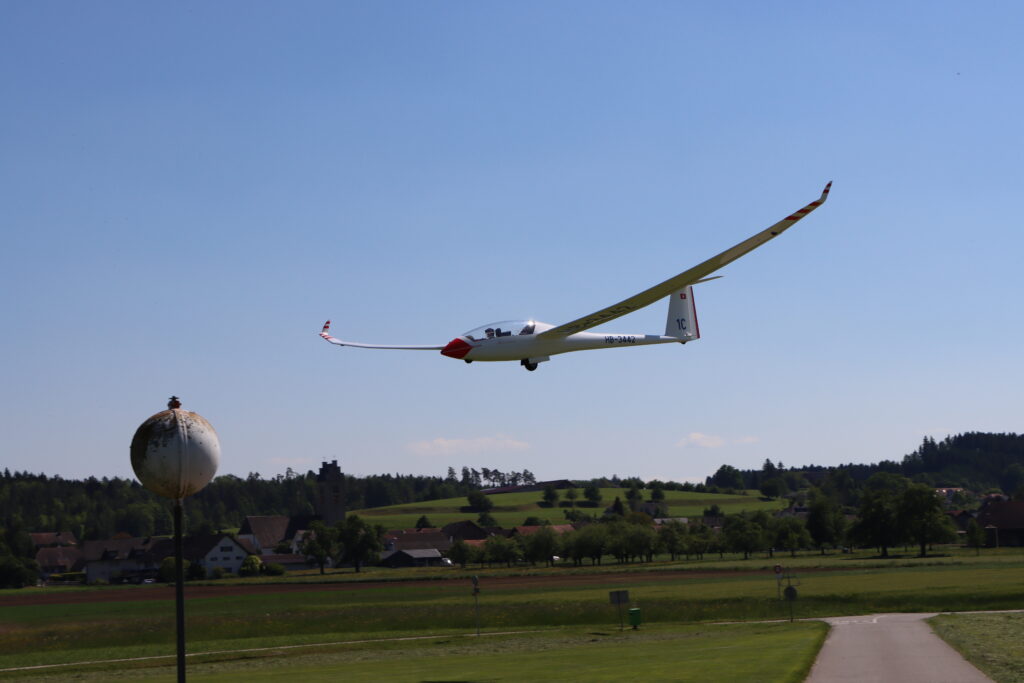

29.05.2020: I went flying again today, this time with one of my brothers, who I had promised a flight years ago but whose busy schedule somehow never matched my busy schedule. We did a crossing of Zurich Airport CTR and then followed places which mean something to him. It has again been quite nice weather as during the last few flights, with blue sky in the plains but quite fresh temperatures when we departed (around 10 oC). It was however quite bumpy, with gusts at ground level of up to 25 kts announced for around noon, and quite strong winds at 10’000 ft of 30+ kts.
Below the city of Winterthur, where he lives, with Mont Blanc in the background, roughly 250 km away.

Zurich Airport was deserted as during the last few flights, this will however change in the next weeks as most airlines, including Swiss, start ramping up their flight operations again from beginning of June.
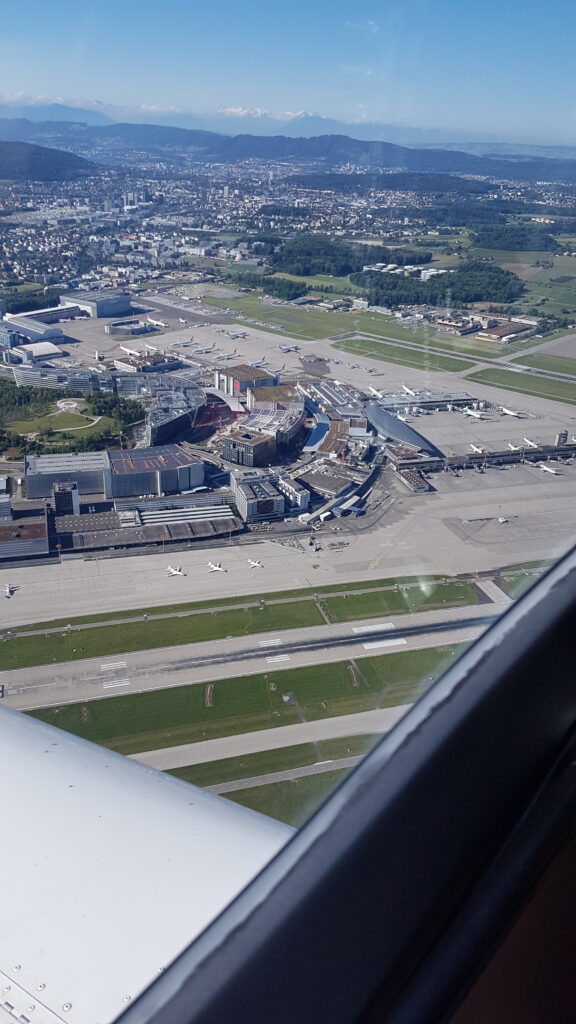
A quick look at Zurich city, before heading into the mountains.

To avoid turbulence we climbed to around 10’000 ft, passing a still empty Rigi. Here too things will change already this weekend, as trains to the top will start with a reduced schedule already on Saturday.
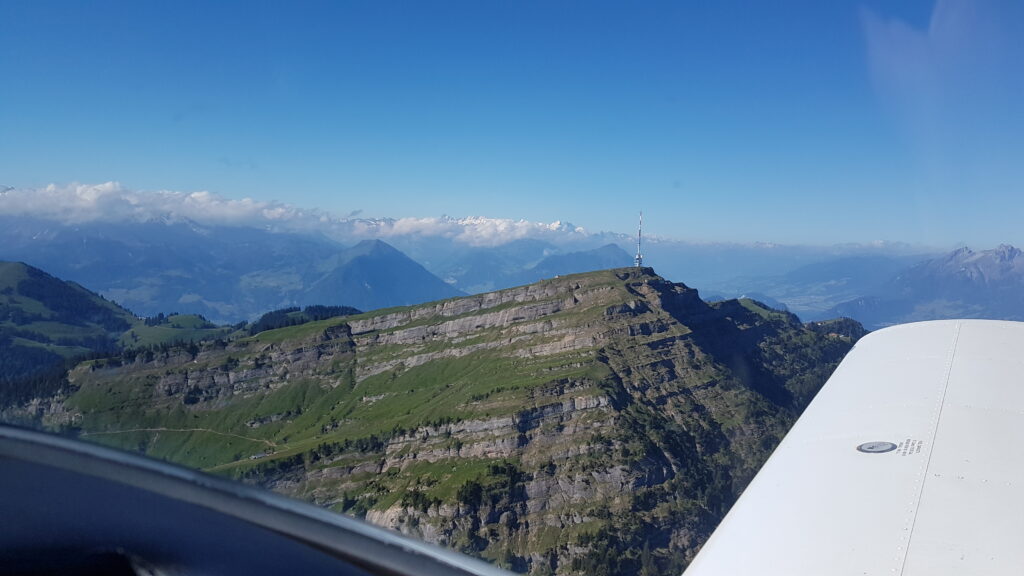
We then headed into the mountains, below the Muotatal at which end the Hölloch lies, one of the worlds ten longest cave systems. it has a total length of over 200 km, with an altitude difference of nearly 1’000 m.

The caves are within a large limestone formation, which can be seen below.
